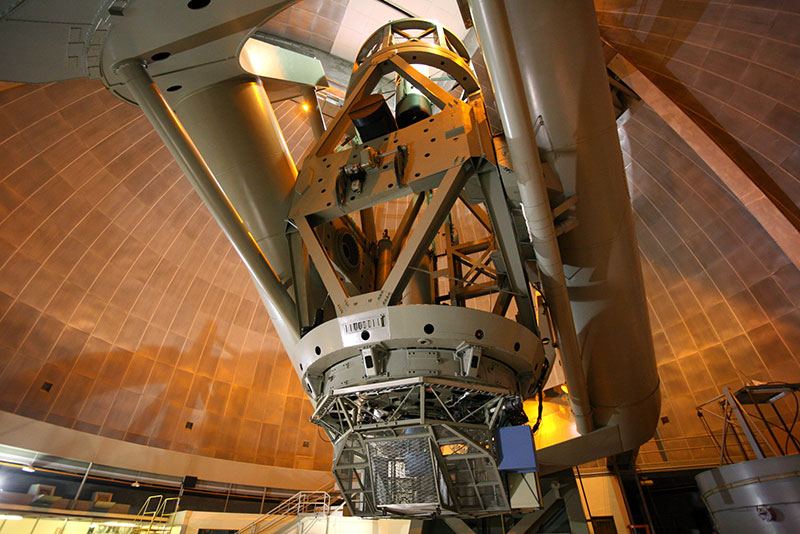
Projects
Automated Data Reduction
Making Every Photon Count: An Automated Data Reduction Pipeline for the Palomar Double Spectrograph
PI: Mansi Kasliwal (Division of Physics, Mathematics and Astronomy)
In optical astronomy, spectroscopic data reduction is the process of converting the 2D raw image into a wavelength- and flux-calibrated 1D spectrum. Historically, this process has been time consuming and involved manually repeating the same set of steps for each exposure taken and relied on legacy software first written in the 1980s, on which development has been discontinued since 2013. The modern philosophy on astronomical instrument design includes great data reduction pipeline software as part of the instrument. The Palomar Double Spectrograph (DBSP) is the workhorse instrument of the 200-inch Hale Telescope, first commissioned in 1982, and serves a diverse user base with a broad range of observing experience. To better serve the observers, allowing them to spend less time reducing their data and more time analyzing it, the Automated Data Reduction project aimed to create a fully-automated data reduction pipeline for DBSP.
The Schmidt Academy collaborated on the development of DBSP_DRP, the Double Spectrograph Data Reduction Pipeline, to orchestrate the data reduction process, making smart decisions so that no user input is needed for the majority of science cases. Though its primary function is fully-automated data reduction, DBSP_DRP provides flexibility and customizability for astronomers to fine-tune the data reduction for the most difficult cases. DBSP_DRP also contains a quicklook functionality that allows observers to get a rudimentary reduction in real-time, allowing them to make quick decisions during an observing run. DBSP_DRP is already in routine use by the ZTF group at Caltech and has sped up their process of spectroscopically classifying cosmic fireworks. DBSP_DRP will be announced to the multinational Palomar observer community in their quarterly newsletter, and its quicklook reduction will be made available on a dedicated computer in the observing room at the telescope. The Next Generation Palomar Spectrograph will use DBSP_DRP as the starting point for its data reduction pipeline.

